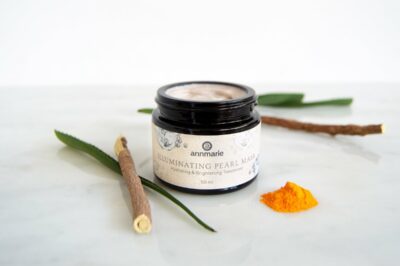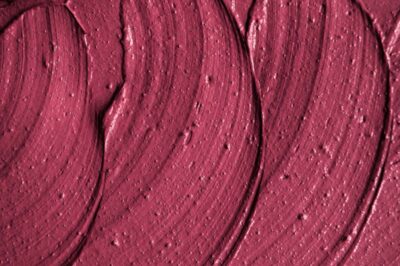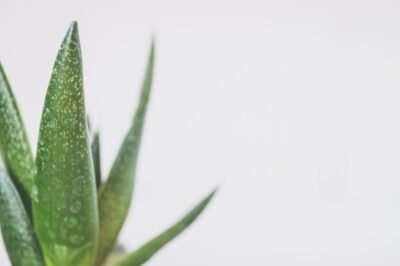Table of Contents[Hide][Show]
A desirable aspect of masks is that there are copious choices to choose from, ranging from DIY to store-bought sheet, cream, gel, and peel-off varieties. So, how do you know how to choose the right facial mask for you?
Simply consider your skin type and skin care goals. For example, If you have extremely dry skin and your goal is to have a more dewy, youthful complexion, you’re not going to use a clay-based mask that’s going to rob your skin of vital moisture.
To help you out here’s a more detailed overview of how to choose the best facial mask for your skin type.
As aforementioned, you should consider your skin type before purchasing or making a mask. Don’t buy into a product just because it’s trendy or fun to use as it could possibly have an adverse effect on your skin.
Here are some tips on what ingredients and popular types of facial mask formulas to look for based on the constitution of the skin:
Facial Mask for Oily Skin
Oily skin can be characterized by large visible pores, distinguishable shine (especially throughout the T-Wone mid-day), blackheads, whiteheads, and acne on the face and possibly parts of the body.
The best facial masks for oily skin include:
Clay Based Masks
Clay is advantageous because it cleanses and pulls out grime. It also absorbs extra oil and is extremely rich in minerals such as kaolinite, dickite, nacrite, halloysite, montmorillonite, nontronite, vermiculite, sapnite, chlorite, and more.
It’s not difficult to find a clay-based mask on the market, but you’re going to want one that’s comprised of quality ingredients such as those in Annmarie’s Purifying Mud Mask. This simple yet effective all-natural formula consists of rose and Moroccan rhassoul clays and chlorella algae to cleanse, balance, and remineralize the skin.
Facial Masks with Sulfur
If your oily skin is coupled with acne, look for a mask with sulfur as one of its key ingredients. Sulfur helps to calm and temporarily reduce the appearance of redness—it’s actually been used medicinally for centuries. Studies indicate that sulfur is an effective treatment due to its keratolytic effects.
DIY Egg White and Aloe Mask
If you need to spare a little cash but still want to keep oily skin at bay, whip up an efficient mask right in your kitchen by combining one egg white and two tablespoons of fresh aloe. The fundamental element of egg whites is protein (approximately 3.6 grams) and it’s known to absorb excess oil from the skin while imparting a tightening effect.
While aloe is known for its soothing properties, it’s also an excellent moisturizer for oily skin as it won’t clog pores or promote breakouts. Be sure to use 100% pure aloe—not that glowing green gel that makes an appearance on store shelves come summertime. Leave the treatment on for ten minutes.

Facial Mask for Normal and Combination Skin
Perhaps the most common of skin types, “normal” skin can be described as well-balanced. So, you have a bit of oil in your t-zone (forehead, nose, and chin), but for the most part, your skin isn’t too oily or too dry. On the other hand, combination skin gets shiny in that t-zone region no later than mid-way throughout the day and it’s likely that the cheeks are on the drier side. Here are the best types of facial masks to look for if your skin fits into either one of these categories.
Masks with Humectants
Humectants draw water from the air into the skin, so they are great for adding moisture without clogging the pores. Avoid synthetic humectants such as Propylene glycol, hexylene glycol, and butylene glycol and opt for natural versions such as aloe, egg yolk/white, and honey instead.
This golden nectar is packed with minerals, provides a calming sensation, and helps increase hydration in the skin. While you can simply slather 1-2 tablespoons of raw or Manuka honey on your face for 15-20 minutes, you can also make a more advanced DIY facial mask by adding other nourishing ingredients such as avocado, a couple of drops of lavender essential oil, lemon, yogurt, or oatmeal.
Just be sure to remove the mask with a warm washcloth to effectively remove all of the sticky residue.
Masks That Exfoliate
Regular exfoliation is the key to maintaining a glowing complexion, but it can also help prevent clogged pores that can lead to blackheads, whiteheads, and breakouts—all potential side effects of an oily complexion.
Look for a mask such as Annmarie’s Ayurvedic Facial Scrub that softens and revitalizes the skin while gently exfoliating, too. Instead of removing the product after making a few passes around the face in a massaging motion, leave it on your skin like a mask for a few minutes for added nourishment.
Masks That Plump Your Look
Every skin type can’t avoid chronological aging. With that in mind, look for facial masks that contain hyaluronic acid, aloe vera, vitamin E, squalane or ceramides. These hydrating ingredients help rebuild the skin’s natural moisture barrier and provide an instant plumping effect.
Facial Mask for Dry Skin
Thirsty skin lacks moisture and can be visibly lackluster—especially around the eyes and on the cheeks. Side effects include flakes, itchiness, tightness, visible lines and wrinkles and sensitivity—even to the point where the skin can become painful. While dry skin occurs with age since oil production slows down, other culprits include harsh cleansers, overly long and hot showers/baths, sun exposure, climate change, metabolic changes, and medication. Look for the following ingredients when shopping for a mask for dry skin.
Facial Masks that Hydrate
It goes without saying, but if you have parched skin, avoid masks with oil-absorbing clays and muds at all costs. The goal of the mask is to add as much moisture as possible, so look for formulas that contain humectants and moisturizers. This could be anything from nourishing fruit and nut oils/butters to peptides and hyaluronic acid to good old-fashioned honey. Annmarie’s Coconut Honey Mask hydrates, nourishes, and moisturizes dry and sensitive skin, thanks to an organic blend of live enzymes, amino acids, coconut oil, and wildcrafted honey.
How to Apply Facial Mask – The Proper Way
Just because you now know how to choose the right facial mask for your skin type doesn’t mean that the coaching stops there. There are some key ground rules associated with masking to ensure you’re getting optimal results—keep the following in mind.
Step 1: Cleanse First
Even if you don’t wear cosmetics, never slap a mask on uncleansed skin. Always make sure to wash your face before masking, otherwise, you run the risk of trapping impurities in the skin.
Step 2: TLC – Treatment, Love and Care
Note that your skin will naturally be a bit more sensitive after masking since it’s been at work absorbing excess oil and impurities. When removing a clay- or mud-based mask, soften the hardened film by patting a warm, moist washcloth against your face. Never aggressively rub to remove excess product. The same rule applies when drying your face. Give your skin a little TLC after being hard at work.
Step 3: Watch The Clock
While it’s not uncommon for a mask to get slightly stiff/tight, you still have to pay attention to how long you leave it on—more time isn’t always better! If clay-based masks get too dry, they can dehydrate your skin. On the flip side, if moisturizing masks are left on for too long they can clog pores. We usually suggest at least 15 minutes but never longer than an hour. The only scenario where this rule doesn’t apply is if you are wearing a sleeping mask that’s designed to be worn overnight.
Step 4: Follow Up
Follow up a mask with treatment products (think essence, serum, moisturizer) formulated for your skin type. This is the optimal time to do so as the skin tends to be more absorbent. For an added bonus, mask at night so that you give your skin ample time to repair and reap the benefits of the active ingredients at work.
Step 5: Don’t Overdo it
While some people don’t mask enough (or ever), don’t overdo it either. Masking once or twice a week is in fact quite efficient.
Step 6: Be Consistent
With the above in mind, it’s important that you’re consistent with all aspects of your skin care routine—masks included. The only way to see results for both the short- and long-term is by staying faithful to your regimen. Find time to put on a mask when it’s most convenient for you, whether that’s a weekly Sunday night ritual, while you’re bathing, or even while packing lunch for the kids—whatever works!
Step 7: One at a Time
Don’t overburden your skin by using too many masks and/or other topical products at once. Even though studies indicate that women are gravitating towards more natural ingredients (a good thing), they are also using more products. While it’s important to have a solid beauty routine, product overload is likely to have a disadvantageous result.
Step 8: A Holistic View
Remember that all the skin care products in the world aren’t going to replace a healthy diet, the appropriate amount of water, exercise, and self-care. What’s going on inside your body and mind will ultimately show up in your skin, too.
In Conclusion
As consumers begin to add more products to their beauty regimens, facial masks are starting to get the attention they truly deserve. With results such as decongested pores, an immediate glow, and a boost of hydration, there’s a mask out there for everyone. The key is determining your skin type and goals so that you don’t have counteractive results.
Even though we’re starting to see more masks on the market, it’s integral that you choose the correct one based on your needs—not just your wants. While masks can provide applicable benefits when used correctly and regularly, be mindful not to overdo any type of product. Last but certainly not least, remember that the best path to beautiful skin involves a healthy diet, exercise, and self-care that allows you to live a balanced lifestyle.
Sources:
“The Beauty Consumer: Face Mask Feelings,” October 1, 2018, Stella Rising, https://www.stellarising.com/blog/beauty-consumer-face-mask-feelings
“Oily Skin: A Review of Treatment Options,” August 2017, U.S. National Library of Medicine National Institutes of Health, https://www.ncbi.nlm.nih.gov/pmc/articles/PMC5605215/
“Over-the-Counter Acne Treatments,” May 2012, U.S. National Library of Medicine National Institutes of Health, https://www.ncbi.nlm.nih.gov/pmc/articles/PMC3366450/
“Are Egg White Face Masks Good For Your Skin?”, November 7, 2018, Medical News Today, https://www.medicalnewstoday.com/articles/323602.php#how-to
“Dry Skin,” American Skin Association, http://www.americanskin.org/resource/dryskin.php
“For Nearly Half of U.S. Women Using Facial Products, Ingredients Determine Their Purchases,” September 18, 2017, https://www.npd.com/wps/portal/npd/us/news/press-releases/2017/for-nearly-half-of-us-women-using-facial-skincare-products-ingredients-determine-their-purchases/








Leave a Reply